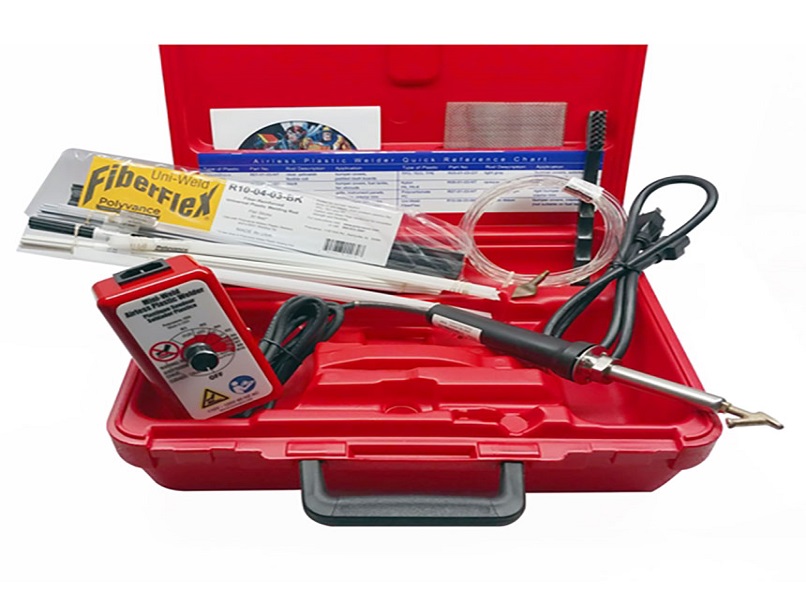Plastic Welding System of Polypropylene Welder: Enhancing Efficiency and Durability in Manufacturing

In today's fast-paced manufacturing industry, the ability to efficiently and effectively join plastic components is essential. Plastic welding has emerged as a reliable and versatile technique, enabling manufacturers to create strong and durable connections between plastic materials. Among the various materials used in plastic welding, polypropylene has gained significant popularity due to its exceptional properties. In this comprehensive article, we will delve into the intricacies of the plastic welding system of a polypropylene welder, exploring its role in enhancing efficiency and durability in manufacturing processes.
Understanding the Plastic Welding System:
A plastic welding system encompasses a range of equipment, tools, and techniques specifically designed for welding plastic materials together. When it comes to welding polypropylene, a dedicated polypropylene welder is employed. This specialized welder ensures precise and dependable welding of polypropylene components, contributing to the overall quality and longevity of the final product.
Advantages of Polypropylene Welding:
Utilizing a polypropylene welder offers several advantages in the manufacturing process. One key advantage lies in the welder's ability to create strong and resilient welds on polypropylene materials. Polypropylene boasts a high melting point and exceptional chemical resistance, making it suitable for a wide range of applications across industries. By employing a polypropylene welder, manufacturers can ensure that their welded joints can withstand harsh environmental conditions and endure mechanical stresses, resulting in products with extended lifespans.
The Polypropylene Welding Process:
The process of plastic welding using a polypropylene welder involves a series of well-defined steps, each contributing to the overall efficiency and durability of the welded joint:
- Preparation: To ensure optimal adhesion, the surfaces to be welded are meticulously cleaned and prepared. This step removes any contaminants that could compromise the integrity of the weld.
- Heating: The polypropylene welder employs a heating element to generate controlled heat, which is then applied to the surfaces to be welded. This heat causes the polypropylene material to melt, creating a bond-ready surface.
- Joining: Once the polypropylene material reaches its melting point, the surfaces are carefully pressed together, facilitating the formation of a strong and durable bond. As the material cools and solidifies, the joint gains its maximum strength.
- Finishing: To achieve the desired appearance and functionality, the welded joint is often trimmed or finished. This step ensures a seamless integration within the overall product design and enhances the aesthetic appeal of the final product.
Advancements in Polypropylene Welding Technology:
The plastic welding system of a polypropylene welder has undergone significant advancements, leading to improved efficiency and accuracy in the manufacturing process. Modern polypropylene welders often incorporate advanced features such as temperature control, automated welding parameters, and real-time monitoring systems. These advancements enable manufacturers to achieve precise control over the welding process, ensuring consistent and high-quality welds while minimizing the risk of defects or inconsistencies.
The Impact of Polypropylene Welding in Manufacturing:
The plastic welding system of a polypropylene welder has revolutionized manufacturing across various industries. It offers manufacturers a reliable and efficient method for joining plastic components, eliminating the need for additional adhesives or mechanical fasteners. This not only streamlines the production process but also reduces costs associated with secondary assembly operations.
Applications of Polypropylene Welding:
The applications of polypropylene welding are vast and diverse. From automotive components and packaging materials to medical devices and household appliances, the plastic welding system of a polypropylene welder finds utility in numerous industries. Its ability to create strong and durable connections between polypropylene components ensures the integrity and longevity of the final products, meeting the stringent requirements of modern applications.
The plastic welding system of a polypropylene welder plays a pivotal role in enhancing efficiency and durability in manufacturing processes. By utilizing this system, manufacturers can achieve strong and resilient welds on polypropylene materials, ensuring the longevity and reliability of their products. The continuous advancements in polypropylene welding technology further contribute to improved efficiency and accuracy in the production process. Embracing the plastic welding system of a polypropylene welder allows manufacturers to meet the demands of a competitive market while delivering high-quality products that adhere to stringent industry standards.





